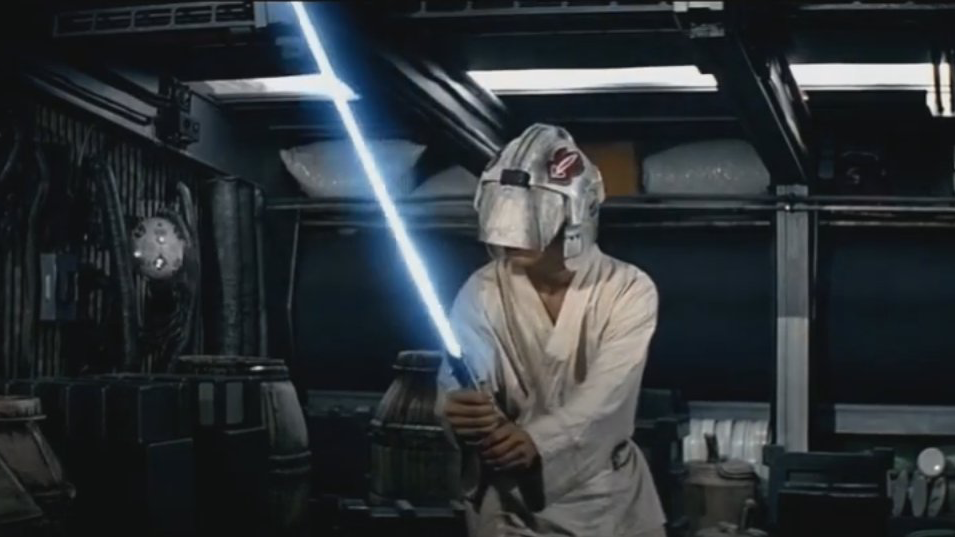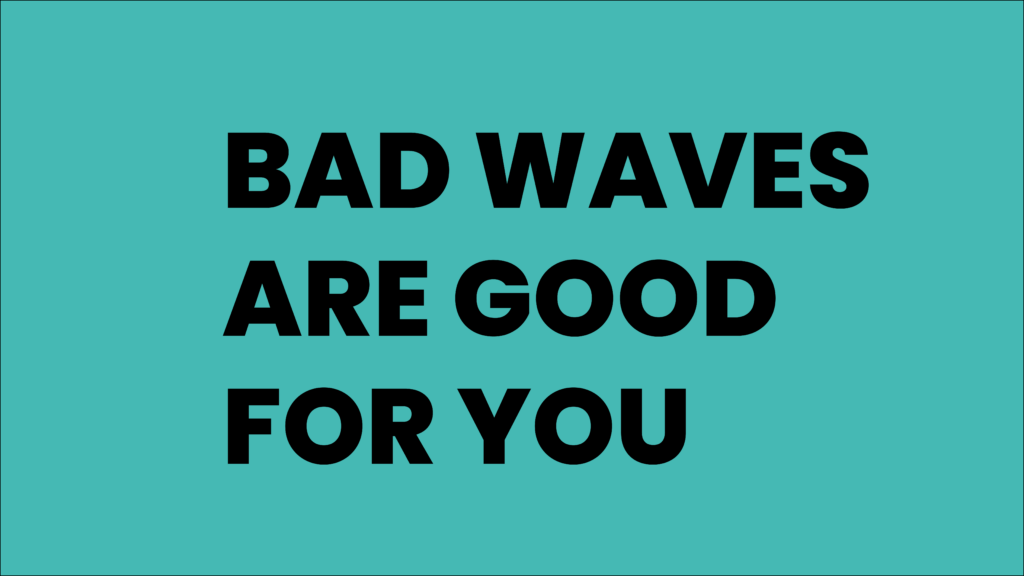- The Wipeout Weekly
- Posts
- 🏄♀️ Surf buddy or not to surf buddy 🤔
🏄♀️ Surf buddy or not to surf buddy 🤔
The truth about surf buddies, beginner bliss in Noosa, gear that messes with your pop-up, and a surfergirl jackpot.

👋 Happy Little Friday! Congratulations to everyone who surfs Lower Trestles—your break’s officially been picked for Olympic Surfing at LA2028. Which means… no waves for you that summer? 🥺 For the rest of us, there’s always this bumper of a newsletter. 😜
🏄♀️ Let’s surf:
To surf buddy or not to surf buddy
Noosa, Queensland is a point break
Word of the week: Stokes drift
Girl-Who-Hit-Surfing-Jackpot
Did religion almost wiped out surfing?
Weekly popup ⚡🏄♀️🔥
SURFODRAMA
😱 To surf buddy or not to surf buddy
A surf buddy. It’s a blessing. It’s a curse. Sometimes I no longer know—because my surf buddy is my husband. 😂
The curse? I like going out even if the conditions are less than ideal, and I’ll stay in the water much longer than he’s willing to.
So if we drive to the break together, one of us has to compromise. And that doesn’t always make for a very happy couple. 😜
It got me thinking: what are the pros and cons of having a surf buddy?
Caveats: You’re on the same wavelength, at a similar skill level, and you’re not in a relationship.
Pros
Safety in numbers — It’s always better to have someone watching your back. In the water and in the lineup.
Go-surf forcing function — If they go out and you don’t, oh, the guilt.
Trying new things — You push each other: from the whitewash, into the lineup, into new breaks.
Someone to talk to — Whether mid-sesh or post-surf over snacks.
Cons
None.
Honestly, I don’t see a downside—as long as you have the same surf goals. Sure, you might progress at different paces. You might (literally) drift apart in the lineup.
But having a surf buddy doesn’t mean you’re not your own surfer. You can still paddle out alone. And if it stops working? You can always find a new buddy.
It’s just really nice to have someone to smile at—and yell “WOOHOO!”—when they catch a wave.
And you know what’s even better than having a surf buddy? Having multiple surf buddies. You can always treat finding the right one like a speed dating event (thanks, Deanna!)—until it clicks. 🏄🏻♀️
SURF SPOT SPOTLIGHT

Noosa, Queensland: beginners’ point break
Wouldn’t it be nice to experience a point break without having to worry about getting pummeled on the rocks? So when you hear that Noosa is considered both 1) good and 2) calm… don’t you just want to go? 🥰 I do!
🌊 The surf
"Noosa" means "a place of shade”, but Noosa Main Beach and the point breaks of the National Park are just dreamy. It’s one of the few spots in Australia where long, peeling right-handers break over a sandy bottom with minimal consequence. Main Beach and Johnson's are small-wave spots, great for total beginners.
🚿 Water quality
Generally excellent. Noosa is a national park, after all. Just avoid surfing right after heavy rain—runoff happens everywhere.
👙 Wardrobe
No wetsuits needed most of the year (this must be nice). In summer, it’s boardies and bikinis all day. In winter (June–August), you might want a spring suit or 3/2 depending on your tolerance for chill.
☀️ Best time for beginners to go
Summer (Dec–Feb): Warm water, small and friendly surf, but you know—holiday crowds.
⚠️ Hazards
Crowds, especially during the Noosa Festival of Surfing (usually March).
🏄 Rentals + lessons
You’ll find board rentals and surf lessons right on Main Beach. There are also tons of surf schools offering beginner packages, longboard coaching, and even some surf retreats.
🍉 When you’re not surfing
Walk the Noosa National Park trail for dolphins, koalas, and the views
Hire a boat or just paddleboard on the Noosa River
I keep hearing about gelatos from Massimo’s 🍨
Shop and snack your way through Hastings Street
Hit the Eumundi Markets
🧳 Solo friendly?
Absolutely. Noosa is safe, walkable, and chill, with surf hostels, friendly locals, and tons of other learners in the lineup.
GIRL-WHO-HIT-THE-SURFING-JACKPOT
🏄♀️ Not a water person in Fiji: Rachel’s story
This surfergirl story comes with a serious warning.
You read about Rachel’s adventures—leaving the UK for New Zealand, not really a water person. Oh, interesting.
You see her photos surfing crystal-clear waves. So pretty. I’d love to surf there.
But then you hear how friendly everyone is in Fiji...and suddenly you’re booking the next flight out. ✈️🏄♀️
Read her story
Missed any Girls Who Can’t Surf Good stories? You can find them all here.
WORD OF THE WEEK
🌊 Word of the week: Stokes drift

Waves. We read them. We ride them. We turtle roll through them. But what do we actually know about them?
Do waves serve any purpose? Beyond surfing, that is. There must be a good reason, since there’s no such thing as a wave-less ocean.
Apparently, they are doing a-plenty! They mix oxygen in, circulate nutrients and regulate temperature in shallow water, keep tide pools fresh, and create the surf zone — where fish, birds, dolphins, and mammals like surfers, come to hunt and feed. ☺️
Finally, they create this little phenomenon called Stokes drift.
Imagine you're floating on the surface of the ocean. Waves roll past, and it feels like you’re just bobbing up and down. But over time, you realize: you’ve actually drifted forward, just a tiny little bit.
That tiny forward motion? That’s Stokes drift. It’s caused by the circular motion of water particles under the waves not quite closing the loop—each one moves slightly forward with every pass. Because—physics.
This means that even on a calm, windless day, Stokes drift can quietly carry you down the beach.
And your stoke for catching waves? Slowly drifting away from you. 😂
SURF THRU HISTORY
Did religion almost wipe out surfing?

Religion. Without it, we wouldn’t have the Pyramids, Dalai Lama or the Easter Bunny. But we also might’ve avoided witch hunts, guilt about sex and almost killing surfing for 100 years.
Truth or fake news?
Imagine this—you’re in Hawai’i, it’s the 1700s, and surfing isn’t just a hobby, it’s a sacred ritual. You paddle out, catch a wave, and the entire beach watches in awe.
Now fast-forward a century—surfing is nearly wiped out.
🌺 Hawai’i pre-contact
Before European contact, surfing in Hawaii was a way of life. It wasn’t just about riding waves—it was spiritual, social, and political.
Chiefs surfed on giant Olo boards (up to 22 feet long) while commoners rode shorter alaia boards.
It was a symbol of power—if you ruled the lineup, you had status on land, too.
There were surfboard-making ceremonies, chants, and rituals before paddling out.
✝️ Enter the Calvinist missionaries
When Christian Calvinist missionaries arrived in Hawai’i in the early 1800s, they saw a society that, well, didn’t quite fit their religious beliefs.
😬 Surfing often involved men and women surfing together… sometimes nude. Mixing of the sexes, shock, horror.
📿 It was tied to Hawaiian spiritual beliefs—which the missionaries were actively trying to erase.
😒 It looked way too much like having fun—and fun was not on the missionary agenda.
📉 The decline of surfing (and Hawaiian culture)
So, did the missionaries outright ban surfing? Nope. It was discouraged, but there were other forces in play.
1️⃣ Hawaiians abandoned their traditions in favor of Christian teachings. The churches were full!
2️⃣ Foreign diseases wiped out a huge chunk of the Hawaiian population.
3️⃣ Land was privatized under new Western laws, restricting access to beaches.
4️⃣ The economy shifted—Hawaiians were pushed into farming and labor instead of ocean life.
By 1900, surfing was nearly extinct.
Enter: Duke Kahanamoku
Duke was a Native Hawaiian, Olympic swimming gold medalist, and absolute waterman legend.
In the early 1900s, he introduced surfing to the world, doing demos in California, Australia, and beyond. He brought back traditional Hawaiian surfing, and made it a global sport.
Duke gets a lot of credit for bringing surfing to the world, but it was also down to the Hawaiians who never fully gave up on their traditions. ❤️
WEEKLY POPUP
It’s ok. Blame your tools 😱
We’ve spent the last few weeks “blaming” us—our fitness, our practice habits, our bad habit of staring at our feet. But this week’s it’s about the true saboteurs of our pop-ups: that damn wetsuit and that good-for-nothing board.
Is it easier to pop up when you’re surfing—as good for note ancient Hawaiians intended—naked (well, bikini- or boardshorts-forward)? Hell yeah.
Do you catch more waves on a giant board that weighs as much as the ancient Olo? Of course.
So go on. It’s OK to blame your tools!
🧥 Wetsuits: Fit trumps thickness
Yes, you need the right thickness for your local break:
Warm water (70°F+ / 21°C): bikini, boardies, or a spring suit (lucky you!)
Mild (59–68°F): 3/2mm
Cold (50–59°F): 4/3mm or 5/4mm
Arctic madness: steamer, hood, gloves, booties—and Godspeed
But here's the part no one tells you: try squatting, paddling, and breathing in it before you buy. If it feels wrong on land, it’s not going to feel any better in the water.
Also: most suits are made for “average” bodies. You are not the problem. The sizing system is. So, don’t be afraid to try different brands, different zipper types (front or back), and different sizes. Custom is always an option, if it fits your budget.
There’s literally no rhyme or reason to this wetsuit fitting madness. I have a 4/3 O’Neill Epic that feels more flexible and pleasant to pop up in than my 3/2—you guessed it—O’Neill Epic.
🏄 Surfboards: Size (still) matters
Here’s something you never hear:
“Oh, it’s so much easier for me to pop up now that I bought my own surfboard than when I was learning at a surf school or retreat.”
Buying your first board is a topic for another time—but for now, here’s what makes popping up easier:
Longer boards are better than shorter boards. 9'6" to 8' gives you more surface area to stand on.
Volume matters—especially if, like me, you’re on the curvier side. More volume = more buoyancy and float = more stability + easier paddling. Look for 60–80 liters, but know the trade-off: more volume = harder to turn.
Width helps too. Think 22–24 inches. More width = more side-to-side stability + more room for your feet.
Rocker (nose-to-tail curve): The flatter the better. Flat = more stable = easier to pop up.
Yes, soft tops are beginner-friendly: softer landings, more forgiving on knees, shins, and heads. But, I’ll take my hard-top fiberglass longboard over an 8’ foamie any day—unless it’s big and I’d rather not get smacked in the head.
So if your pop-up is a pain in your butt, maybe—just maybe—it’s not you. Maybe it’s your gear. Go ahead—blame your tools, just make sure you look when you’re going when you pop up. ☺️
THE WIPEOUT WEEKLY FOMO
⬆️ Aaaaaaand that was the last wave of the week!
If a friend forwarded this and you liked it, hit subscribe & join us! We will see you all next week! 🌊
MORE HOUSEKEEPING
Feedback: We do want to hear from you! Whatever is on your mind, drop us a line.
Amazon links: We earn from qualifying purchases—it helps us keep the newsletter running.
Your promos: If you are representing a surf brand and you’d like it to be featured in The Wipeout Weekly, get in touch.




Reply